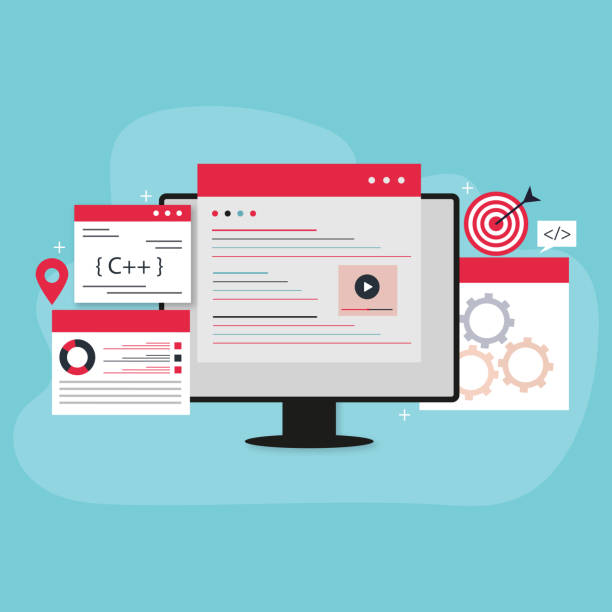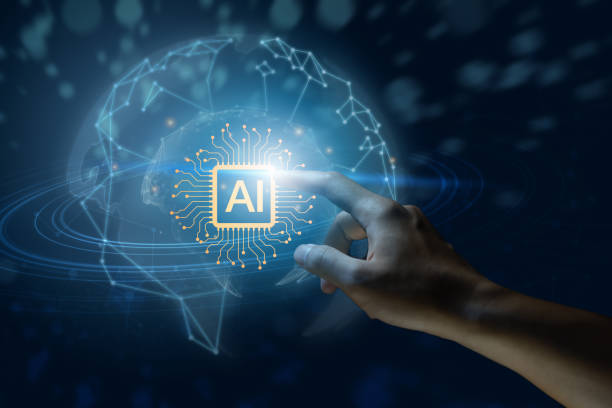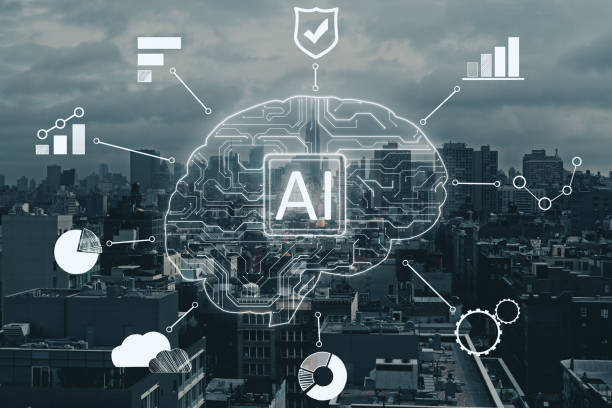Introduction to the Importance of Modern UI Website Design in the Digital Age

In today’s world, where digital competition has reached its peak, modern UI website design is no longer an option, but an undeniable necessity.
Websites have become the main storefronts for businesses and communication platforms, and how users interact with them plays a crucial role in the success of any online project.
A modern and visual #User_Interface not only improves the user experience but also directly impacts conversion rates, user retention on the site, and ultimately profitability.
The goal of this explanatory and educational content is to deeply explore various aspects of modern UI website design; from fundamental principles to the latest technological trends that have transformed this field.
We will examine how an attractive and efficient user interface can convert visitors into loyal customers and what challenges exist along this path.
User Interface (UI) is not limited to mere aesthetic appeal but also encompasses the overall user experience when using the website.
This includes loading speed, ease of navigation, and logical arrangement of elements.
Given the increasing use of mobile devices for internet access, responsive design and optimization for various displays are also an integral part of modern UI website design.
In the following, we will provide specialized, step-by-step solutions to achieve these goals.
This approach ensures that every website is not only beautiful but also efficient and user-friendly to achieve its business objectives.
Does your current website inspire the trust that potential customers should have in your business? If the answer is no, it’s time to get your professional and impactful corporate website with Rasawp.
✅ Fully customized design tailored to your brand identity
✅ Increased lead generation and business credibility in the eyes of customers⚡ Contact us for a free consultation!
Key Principles of User Experience (UX) and User Interface (UI) in Modern Web Design

Modern UI website design goes beyond mere visual appeal; it is an art and science performed with the goal of improving user interaction and providing a pleasant, efficient, and effective experience.
The principles of User Experience (UX) and User Interface (UI) are the cornerstones of any successful website.
These principles include simplicity, consistency, feedback, flexibility, and accessibility.
Simplicity means removing unnecessary elements and focusing on the core information and actions the user needs.
Consistency means uniformity in design, including the use of a consistent visual and interactive language throughout the website.
Feedback allows the user to be aware of the status of their actions, for example, by showing the success of an operation or an error in input.
Flexibility means adapting the design to the varying needs and preferences of users, while accessibility ensures that the website is usable by all users, including those with disabilities.
In a modern UI website design, attention to detail is crucial.
From choosing fonts and colors to designing buttons and forms, every element must be carefully selected and placed to provide a flawless user experience.
This specialized content and guidance emphasizes the importance of Usability, which means the ease with which a website can be used to achieve specific tasks.
A highly usable website allows the user to quickly and effortlessly achieve their goals.
This approach also includes user testing and feedback collection to identify and address weaknesses in the design.
Ultimately, the final goal in optimizing website user experience is to create a digital environment that attracts users, keeps them engaged, and enables them to easily access the information or services they are looking for.
This philosophy is the core of every modern UI website design.
User Research and Its Importance in User-Friendly UI Design
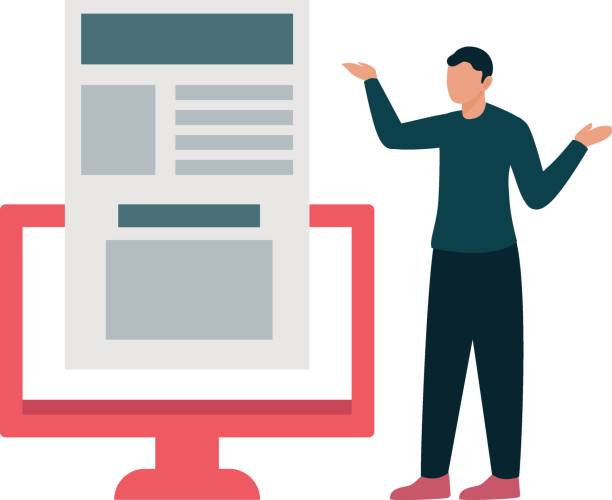
To create a modern UI website design that is truly user-friendly, one cannot solely rely on guesswork or a designer’s personal preferences.
User research is the cornerstone of this process and helps designers understand the needs, behaviors, motivations, and pain points of real users.
This analytical content expresses the profound importance of immersing oneself in the user’s world.
There are various methods for conducting user research, including interviews, surveys, focus groups, and direct observations.
Each of these methods offers unique insights that can help shape an effective user interface.
For example, interviews can reveal deep user motivations, while direct observation of users interacting with a prototype can highlight weaknesses in navigation or workflow.
The results of user research must be translated into interpretable data to inspire design decisions.
Creating Personas and user scenarios are powerful tools that help the design team empathize with their users and develop solutions that truly address their needs.
This process is educational and iterative; with each round of research and design, our understanding of users deepens, and continuous improvement becomes possible.
A website with an advanced user interface designed based on real user data not only streamlines interactions but also increases user loyalty.
Ultimately, the deeper our understanding of our target audience, the more effectively we can design a modern UI website.
In the table below, some of the main user research methods and their objectives are mentioned:
| Research Method | Description | Main Goal |
|---|---|---|
| Interviews | Direct conversation with users to deeply understand their needs and perspectives. | Understanding user motivations, experiences, and problems. |
| Surveys | Collecting quantitative data from a large number of users via questionnaires. | Identifying patterns and general trends in user behavior and preferences. |
| Usability Testing | Observing users performing specific tasks on the website or prototype. | Identifying weaknesses in navigation, design, and workflow. |
| Web Data Analysis | Examining website traffic data (e.g., from Google Analytics). | Understanding actual user behavior, popular paths, and exit points. |
| Card Sorting | Users are asked to categorize concepts into logical groups. | Improving website information structure and navigation. |
Visual and Aesthetic Trends in Today’s Website Design

Modern UI website design is inextricably linked with visual and aesthetic trends.
While functionality and usability are highly important, the visual aspect of a website is the first thing that captures a user’s attention and can greatly influence their initial impression.
Current trends in web design include flat design, neumorphism, dynamic color gradients, extensive use of white space, and prominent typography.
Flat design emphasizes simplicity and efficiency, while neumorphism attempts to bring back a sense of depth and tangibility to digital elements through shadows and highlights.
Modern color gradients give websites an energetic and appealing look, preventing color monotony.
Smart use of white space allows content to breathe and prevents visual clutter, which helps improve readability and overall experience.
Typography also plays a key role in creating user-friendly websites; choosing appropriate fonts and precise measurements for headings and main texts can clearly convey the website’s message and evoke a specific feeling in the user.
This entertaining yet informative content helps designers and developers stay abreast of the latest visual developments.
Subtle animations and micro-interactions have also become an integral part of an advanced UI website design.
These animations not only make the website more lively but can also provide visual feedback and help guide the user along the desired path.
Ultimately, combining these visual elements with an attractive and consistent design approach can create a website that not only looks beautiful but also remains memorable in the user’s mind and provides an unforgettable user experience.
Are you tired of your company’s website not being seen as it should be, losing potential customers? Solve this problem forever with professional and effective website design by Rasawp!
✅ Increase brand credibility and gain customer trust
✅ Attract targeted sales leads
⚡ Contact us now for a free consultation!
Interactivity and Animations: A Critical Role in User Engagement
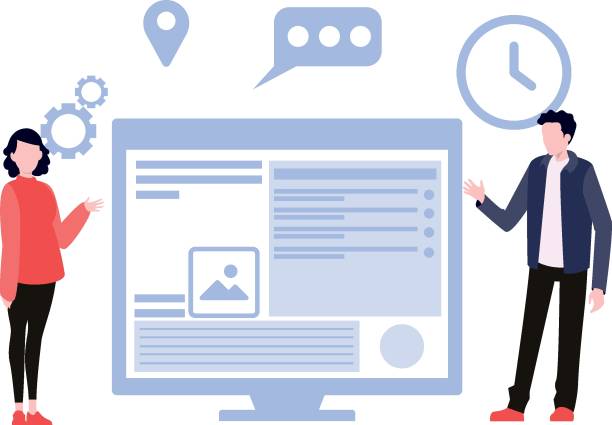
Within the framework of modern UI website design, interactivity and animations are no longer merely decorative elements but rather vital tools for user engagement, providing visual feedback, and enhancing the overall user experience.
Subtle and logical animations can help users understand the functionality of website elements, smooth page transitions, and even evoke specific emotions in the user.
For example, a small animation when clicking a button that loads information can assure the user that their request is being processed and prevent confusion.
Micro-interactions (very small and subtle interactions) are also an important part of this approach.
These interactions can include changing the color of an icon on hover, a form submission confirmation animation, or even a custom loader.
These small details enrich the user experience and convey a sense of attention to detail to the user.
This explanatory content emphasizes that animations should be purposeful and add to the user experience, rather than causing distraction or slowing down the website.
Using heavy or aimless animations can have the opposite effect, deterring users instead of attracting them.
Intelligent selection of timing and animation types for a modern UI website design requires a deep understanding of user psychology and design principles.
JavaScript libraries like GSAP or Lottie provide powerful tools for implementing these animations optimally and smoothly.
Ultimately, an interactive and dynamic website can offer a more memorable user experience, leading to repeat visits and increased user loyalty.
The Importance of Responsive Design and Accessibility in Modern Website Design

In today’s world, where users access the internet via multiple devices (PC, tablet, mobile), responsive design is no longer an advantage but a critical requirement for any modern UI website design.
Responsive design ensures that your website displays correctly regardless of screen size or device type, providing a consistent user experience.
This includes automatically adjusting layout, images, and font sizes so that content is optimally viewable and interactive.
Failure to adhere to this principle can lead to losing a large segment of mobile users, who account for a major share of internet traffic today.
In addition to responsiveness, Accessibility is also a vital pillar in modern UI website design.
Accessibility means designing the website so that individuals with disabilities (such as those with low vision, hearing impairments, or mobility challenges) can also easily use it.
This includes using alternative text for images, providing captions for videos, designing keyboard navigation, and ensuring sufficient color contrast.
Adhering to WCAG (Web Content Accessibility Guidelines) standards is not only an ethical responsibility but can also be legally mandated and significantly help expand your audience.
This specialized content and guidance demonstrates how attention to these two principles can create a website that is not only visually appealing but also accessible and efficient for all users, under any circumstances.
This inclusive approach ensures long-term success in the digital space.
Website Performance Optimization and Its Impact on User Experience
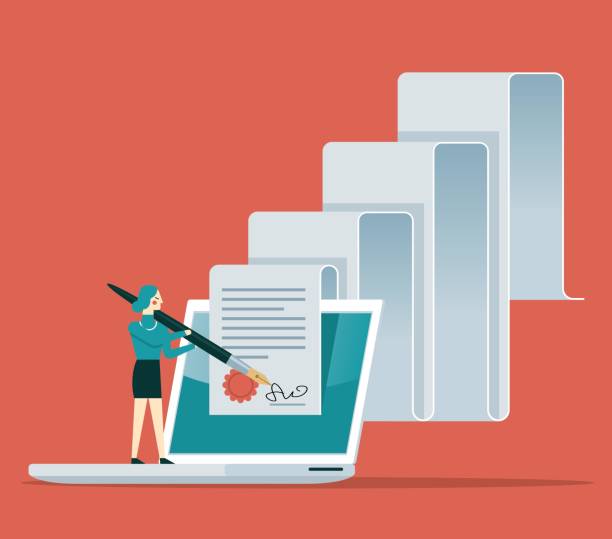
Website loading speed is one of the most crucial factors in modern UI website design, directly affecting user experience and search engine rankings.
Today’s users are impatient and expect websites to load instantly.
Any delay, even a few seconds, can lead to site abandonment and loss of visitors.
Performance optimization includes numerous techniques, such as image compression, minimizing CSS and JavaScript codes, using caching, and leveraging Content Delivery Networks (CDNs).
Compressing images without a noticeable loss in quality can significantly reduce page size.
Code optimization means removing whitespace, comments, and redundant code, which helps with loading speed.
Caching allows the user’s browser to store static website files, so the website loads faster on subsequent visits.
CDNs also reduce response time for users worldwide by distributing website content across different geographical servers.
This analytical and news content highlights the importance of these techniques in increasing user satisfaction and improving Google’s Core Web Vitals, which are now a crucial SEO factor.
A modern UI website design must be technically optimized in addition to being beautiful and user-friendly to remain competitive.
Tools like Google PageSpeed Insights can help you identify performance bottlenecks and provide necessary solutions.
Ultimately, investing in performance optimization is an investment in user experience and overall website success.
In the table below, some of the most important performance optimization factors and their impact on user experience are listed:
| Optimization Factor | Description | Impact on User Experience |
|---|---|---|
| Image Compression | Reducing the file size of images without significant loss of quality. | Increased loading speed, reduced user data consumption. |
| CSS and JavaScript Optimization | Removing extra code, compressing, and combining files. | Faster loading of styles and scripts, improved page rendering. |
| Browser Caching | Storing static website files in the user’s browser. | Much faster loading on subsequent visits. |
| Using CDN | Distributing content across servers geographically close to users. | Reduced server response time, improved global website speed. |
| Lazy Loading | Loading images and videos only when the user scrolls to them. | Reduced initial page load, improved Core Web Vitals. |
Modern Tools and Technologies in Advanced Website Design
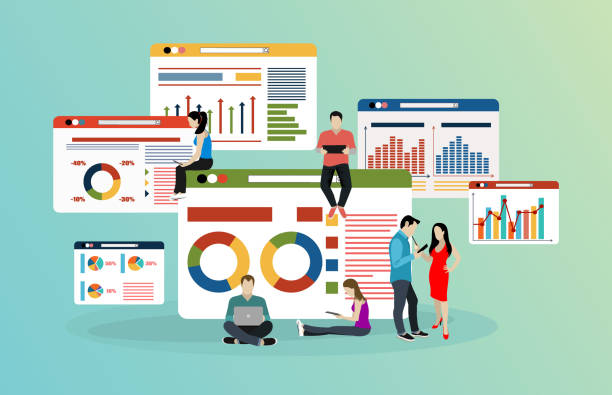
The modern UI website design industry is rapidly evolving, with new tools and technologies constantly being introduced that revolutionize the design and development process.
For designers and developers, awareness and mastery of these tools are crucial to building high-quality and optimally performing websites.
This educational content introduces some of the most important technologies and tools used in this field.
In the realm of UI/UX design, software like Adobe XD, Figma, and Sketch are industry-standard tools used for designing and prototyping user interfaces.
Figma has gained significant popularity due to its cloud collaboration capabilities and the ability for multiple people to work simultaneously on a single project.
In front-end development, JavaScript frameworks such as React, Vue.js, and Angular play a pivotal role in building single-page applications (SPAs) and complex user interfaces.
These frameworks enable the creation of reusable components and complex state management, which accelerates development speed and makes code maintenance easier.
For style management, Tailwind CSS and Bootstrap are highly popular.
Tailwind CSS is a utility-first CSS framework that significantly speeds up development, while Bootstrap is a more comprehensive framework for responsive design.
The use of Content Management Systems (CMS) like WordPress or Strapi (headless CMS) is also very common for rapid development and easy content management in modern UI website design.
Intelligent combination of these tools and technologies allows developers to build websites with excellent user experience and unparalleled performance.
Did you know that 85% of customers check your company’s website before any interaction?
With Rasawp, build a corporate website worthy of your reputation.
✅ Increase credibility and customer trust
✅ Attract high-quality sales leads
⚡ Get a free website design consultation
The Future of Modern UI Web Design: AI and Virtual Reality
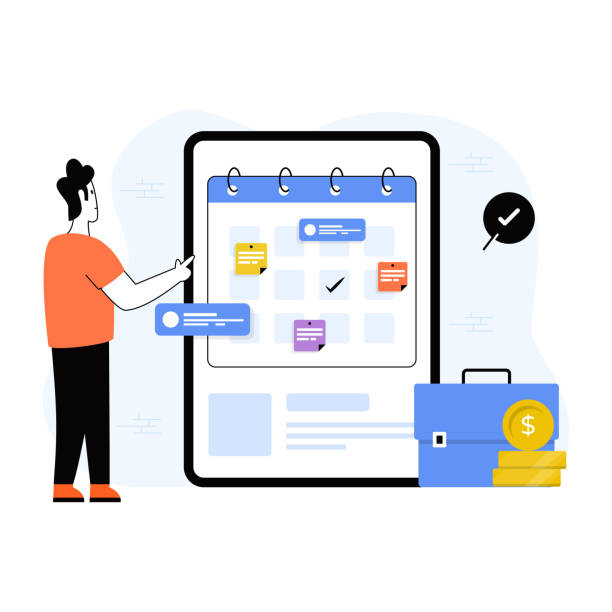
The future of modern UI website design is rapidly converging with emerging technologies such as Artificial Intelligence (AI) and Virtual Reality (VR).
This thought-provoking and news content explores the potential of these technologies in shaping the next generation of web experiences.
AI can significantly enhance the design process through automation tools, content personalization, and user data analysis.
For example, AI-powered design tools can generate initial designs or even automatically optimize UI elements by analyzing user patterns and visual preferences.
AI chatbots embedded in websites can improve customer support and make interactions more personalized and efficient.
Virtual Reality and Augmented Reality (AR) offer the potential to create fully immersive and three-dimensional experiences on the web.
While still in early stages, WebXR-based websites can allow users to view products in their real-world environment or explore virtual spaces.
These technologies can blur the lines between the physical and digital worlds and open new dimensions of interaction for modern UI website design.
The main challenge in this area is to create experiences that are both engaging and functional, without introducing excessive complexity for the user.
With continuous advancements in hardware and software, these technologies can be expected to play an increasingly significant role in advanced and interactive website development, making the future of the web more exciting than ever.
Measuring Success and Continuous Improvement in UI Design
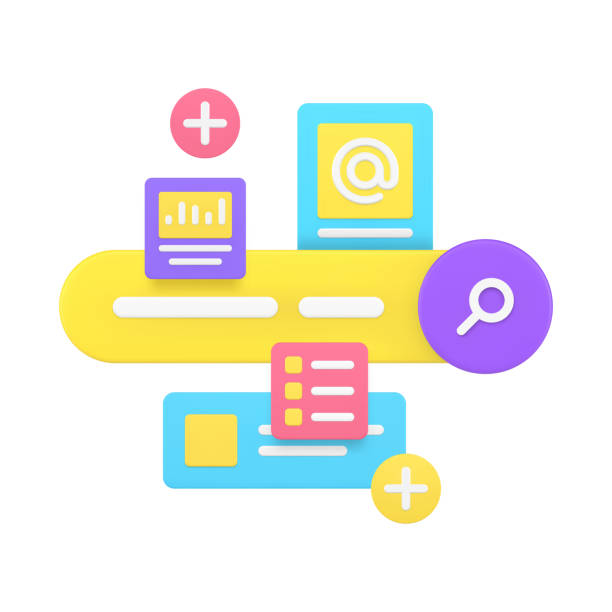
After launching a website with modern UI website design, the work is not over; in fact, it’s just the beginning of continuous improvement.
To ensure the website achieves its goals and provides an optimal user experience, measuring its success and analyzing its performance is crucial.
This analytical and guidance content emphasizes the importance of data-driven decisions in design.
Web analytics tools like Google Analytics and FullStory (for behavioral analysis) provide valuable information on user behavior, navigation paths, exit points, and time spent on pages.
Metrics such as Conversion Rate, Bounce Rate, and Average Session Duration are key indicators that can reflect the effectiveness of the user interface.
In addition to quantitative data, collecting qualitative feedback through in-site surveys, feedback forms, or even repeat user tests is also crucial.
This feedback can reveal the reasons behind numerical behaviors and identify hidden pain points that are not visible through quantitative data.
Based on these analyses, small design changes can be implemented, and their impact can be re-measured; this process is known as A/B testing or multivariate testing.
The goal is to identify best practices and continuously optimize the user experience.
With an approach of creating user-friendly websites and iteration, a website can gradually evolve and keep pace with changing user needs and market trends.
This continuous feedback and improvement cycle ensures that modern UI website design remains efficient and effective, contributing to business success.
Frequently Asked Questions
| Row | Question | Answer |
|---|---|---|
| 1 | What does “modern UI website design” mean? | It refers to designing a website that uses the latest trends and best practices in user experience (UX) and user interface (UI) to make user interaction simple, engaging, and efficient. |
| 2 | Why is a modern UI important for a website? | A modern UI increases user satisfaction, improves conversion rates, extends user time on site, and creates a professional and up-to-date brand image. |
| 3 | What are the key elements of a modern UI? | Key elements include simplicity and minimalism, responsiveness, use of white space, appealing typography, subtle animations, an appropriate color palette, and intuitive navigation. |
| 4 | What role does responsiveness play in modern UI design? | Responsiveness ensures that the website displays correctly on any device (mobile, tablet, desktop) and provides a consistent user experience, which is essential for modern UI. |
| 5 | How important is typography in modern UI design? | Typography plays a very important role in readability, visual hierarchy, and brand identity. Modern fonts and their combinations can contribute to the overall beauty and appeal of the site. |
| 6 | How are animations and micro-interactions used in modern design? | Animations and micro-interactions are used to provide visual feedback, guide the user, and add a sense of dynamism and appeal to the user interface, provided they are not excessive. |
| 7 | What is the role of User Experience (UX) in modern UI design? | UX is the foundation of modern UI. A modern design must first be functional, understandable, and enjoyable (UX), and then beautiful and appealing (UI). |
| 8 | What tools are used for modern UI design? | Tools like Figma, Adobe XD, Sketch, and InVision are used for design, and frameworks like React, Vue.js, or Angular are used for implementation. |
| 9 | How can overly complex design be avoided in modern UI? | By focusing on minimalism, removing unnecessary elements, using plenty of white space, and adhering to the principle of “Less is More.” |
| 10 | What is the importance of user testing in modern UI design? | User testing ensures that the designed UI is truly useful, understandable, and engaging for users, and that potential issues are addressed before launch. |
And other services of Rasawp Advertising Agency in the field of advertising
Smart Digital Advertising: A creative platform for improving digital branding with precise audience targeting.
Smart Marketplace: Designed for businesses seeking to manage campaigns through the use of real data.
Smart Marketing Automation: A professional solution for analyzing customer behavior with a focus on custom programming.
Smart Digital Advertising: An effective tool to increase sales by optimizing key pages.
Smart Advertising Campaign: A combination of creativity and technology to attract customers through intelligent data analysis.
And over hundreds of other services in the field of internet advertising, advertising consultation, and organizational solutions
Internet Advertising | Advertising Strategy | Advertorials
Resources
Zoomit – Technology NewsDigikala Online MagazineVirgool – Blogging PlatformParsclick – Website Design
? To boost your business in the digital world, Rasawp Afarin is with you. We help your brand grow and gain visibility by providing innovative solutions in digital marketing. For more information about personal website design and our other services, contact our experts today.
📍 Tehran, Mirdamad Street, next to Bank Markazi, Southern Kazeroon Alley, Ramin Alley No. 6

